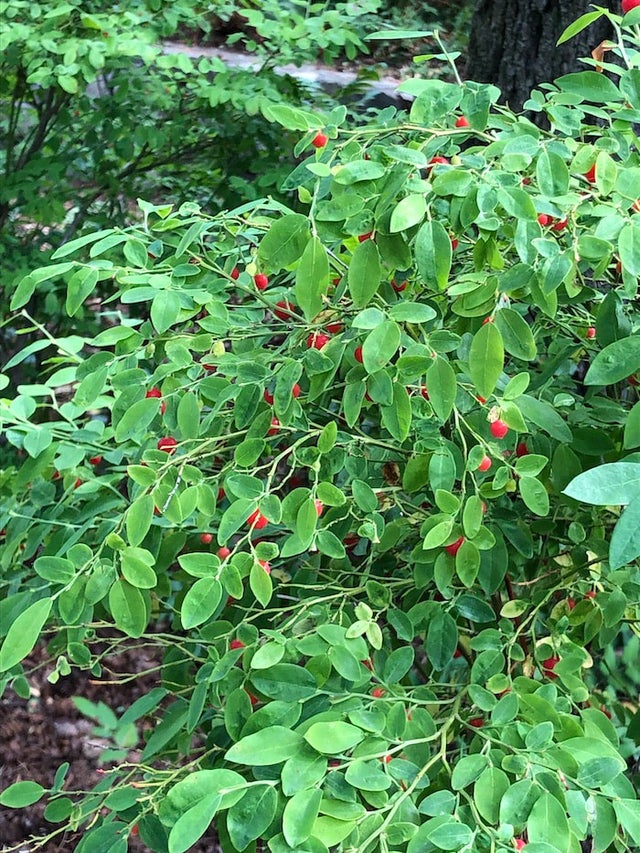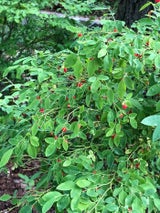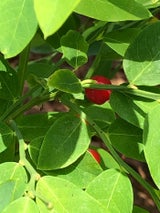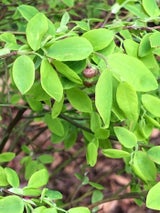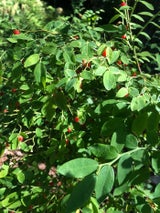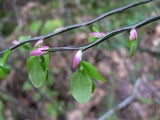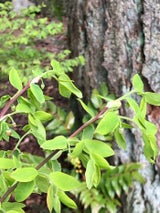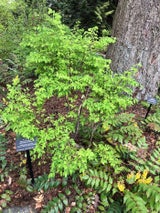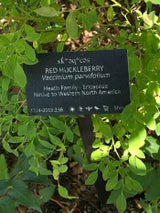- Plant IDs
- >
- ID By Type
- >
- Shrubs
- >
- Vaccinium parvifolium
Vaccinium parvifolium
Common name: Red huckleberry
The Vaccinium genus belongs to the Heath family (Ericaceae). There are over 450 species of Vaccinium worldwide, and forty of these are native to North America. Of these forty, fifteen are native to the Pacific Northwest. They are found along our Pacific Coast from Alaska and British Columbia down to California. Native Vaccinium species include blueberry, cranberry, lingonberry, and huckleberry.
Vaccinium parvifolium or red huckleberry is the only native, upright Vaccinium species with red berries. It can grow up to four metres (twelve feet) in height, but more often only one or two metres (three to six feet). V. parvifolium grows in the understory of moist coniferous forests and is often seen growing on a fallen log or an old stump.
V. parvifolium has drooping, bell-shaped, pinkish-white flowers from April to June, followed by edible, bright red, round berries each about six to ten millimetres (3/8 of an inch) in diameter. The leaves are small, oval, bright green, and have smooth margins. In fall they turn bright red. V. parvifolium branches are slender and strongly angled.
V. parvifolium was a source of food and medicine for First Nations people. The berries were used throughout the year. They were eaten fresh, or dried for use in winter. V. parvifolium is a good source of Vitamin C. First Nations people also used the fruit as fish bait because they resemble salmon eggs. The bark and leaves of red huckleberry were used to make a tea to treat colds.
Wildlife also enjoy V. parvifolium. The blossoms attract hummingbirds, native bees, and other insect pollinators. The berries are eaten by birds, small mammals, and bears. In fact they are one of the grizzly bear's favourite food. Deer, mountain goats, and elk nibble on the foliage and twigs during fall and winter.
V. parvifolium was described by James Edward Smith, an English botanist and first president of the Linnean Society of London in 1817. How the genus name Vaccinium derived is unclear, but the specific epithet is from Latin. 'Parvi' means small and 'folium' means leaf, referring to the small, delicate leaves.
V. parvifolium thrives in an area with well-drained, acidic soil, an area that is rich in decaying wood. It does not tolerate root disturbance.
The photos were taken of a grouping of Vacinnium parvifolium shrubs planted in 2004 in Bed 23B just outside the Floral Hall entrance. There are more example in other parts of the garden.
Text and photos by Kumi Sutcliffe except for flower buds by Walter Siegmund, via Wikimedia Commons
